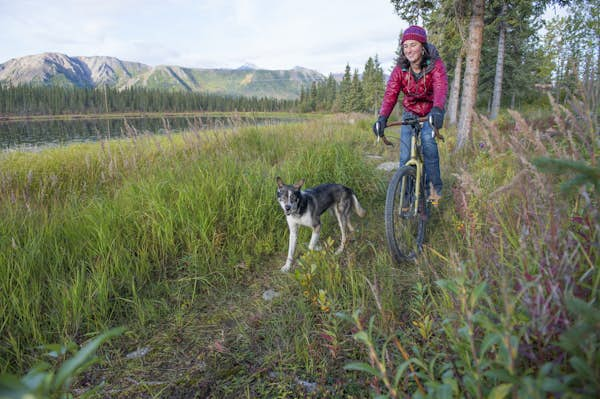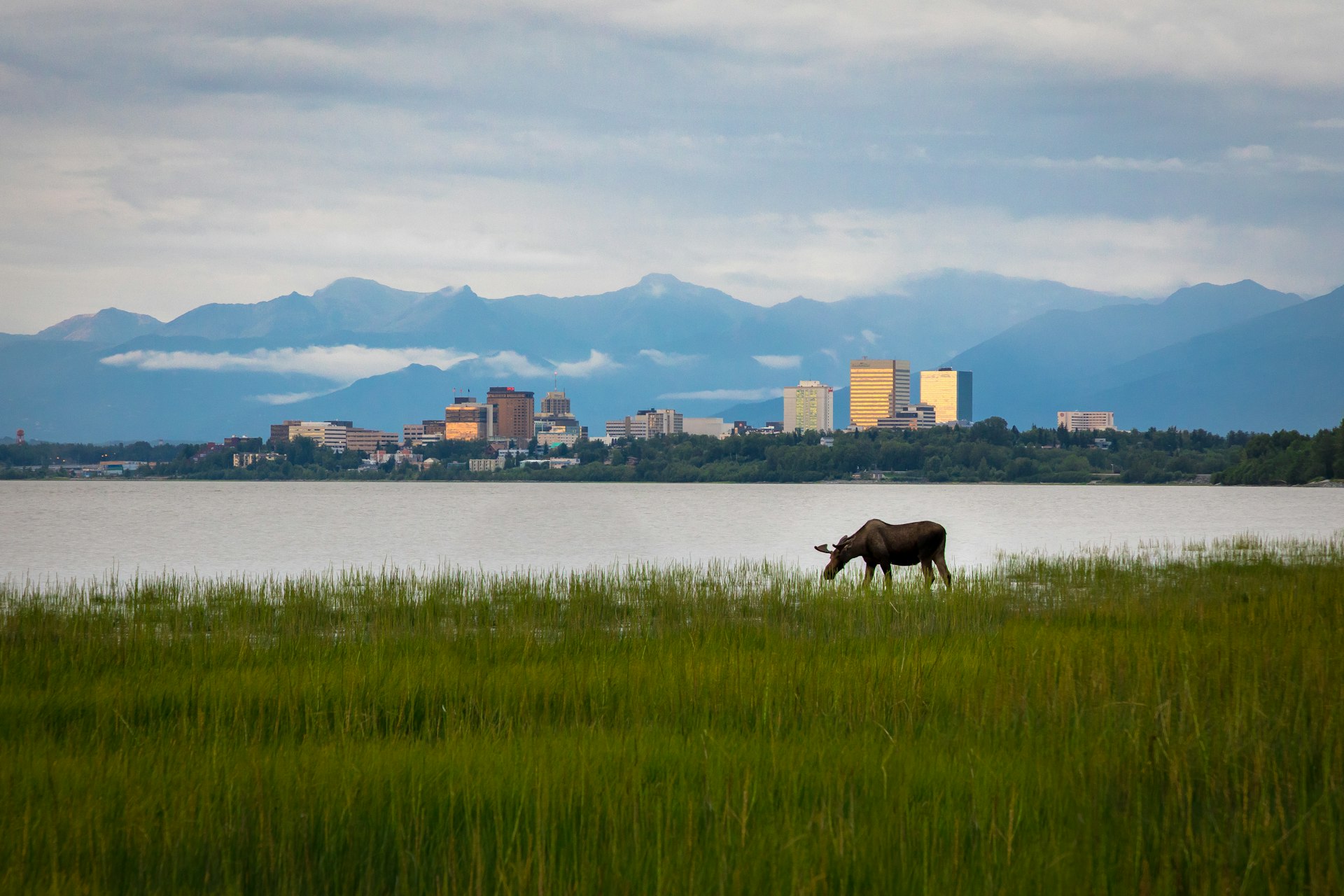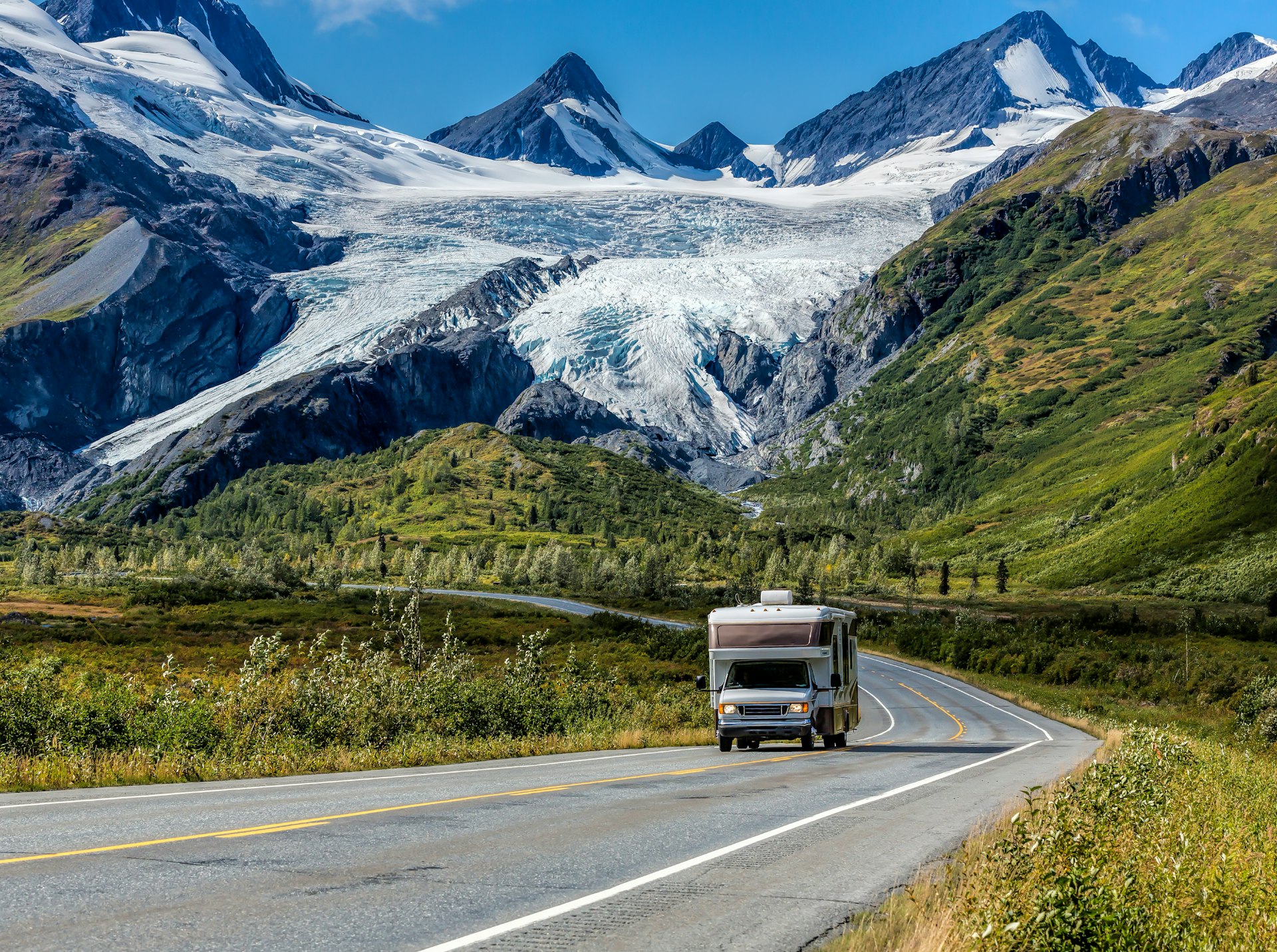
Transportation around Alaska can be challenging, but given enough time and planning, provide for massive rewards in the opportunities to get off the beaten path for those wishing to adventure in North America’s “Last Frontier.”
Although most easily explored by vehicle or cruise ship, road trippers or cruise passengers will find the abundance of crowds creating headaches where the plan was to get off exploring rather than looking for parking or space at the buffet. It tends to work in the travelers favor to strap on the backpack and get back to the spirit of adventure meandering around Alaska by numerous other means.
Make the most out of every adventure with help from our weekly newsletter delivered to your inbox.  It’s not uncommon to see a moose wandering around while you’re walking downtown in Anchorage © BILD LLC / Shutterstock
It’s not uncommon to see a moose wandering around while you’re walking downtown in Anchorage © BILD LLC / Shutterstock
Start exploring in Anchorage
The biggest city in Alaska challenges the notion of where a city of a quarter million turns into a wilderness park. It’s not uncommon to see a moose wandering while you’re out walking downtown, or biking and skiing the hundreds of miles of trails that are part of the city’s heart. Many trails then connect to Chugach State Park, which encompasses nearly a half million acres just outside the city limits.
To get around Anchorage, typical transportation options include taxis, Uber and a well-timed bus system that serves the greater Mat-Su Valley.
Take the Alaska Marine Highway ferry if cruising isn’t for you
The Alaska Marine Highway ferry can be an excellent option for those with time to spare on their initial voyage up from Bellingham, Washington. A walk-on ticket means just that: carrying only what you can.
You don’t necessarily have to book a cabin; instead, grab one of the first-come-first-served spaces on the top deck, where tents are taped down and lawn chairs become valuable real estate, transforming the space into a campground for the three-to-four-day journey to remote communities in southeast Alaska.
Onward to Whittier, the port that usually serves Anchorage and the Alaska railroad. For those disinclined towards traditional cruise ships, the ferry is a moderately priced way to get north. Booking through the website will take advance planning, but you can bring bikes, kayaks and other large items on board, so it can be an extremely cost-effective way to get larger touring gear up north.
Flying to Alaska is easy and relatively quick
It is usually best to book directly with Alaska Airlines for easy connections – commonly through Seattle – and deals throughout the year. (You may be pleasantly surprised to find last-minute deals on sites such as Kayak.) It’s normal for the airline to check equipment, like bikes or kayaks, for a nominal fee.
Go on a “milk run” for scenic flight adventures on a budget
To reach more offbeat places not served by road without the cost of hiring a bush plane, Alaska Air has larger aircraft that do the “milk run,” making multiple stops regularly through southeast Alaska to serve local communities’ cargo and groceries. It’s a window-seat lover’s dream above a plethora of glaciers.
Always starting in Anchorage or Seattle, it can also include the towns of Cordova, Yakutat, Juneau, Sitka, Ketchikan, Wrangell and Petersburg, depending on the day. None of these towns are road accessible (they’re otherwise reachable only by ships or ferries), but they are all interesting and walkable, with lodges and outdoor adventures, while remaining relatively less visited.
 Alaska’s trains can be the best option for both the environment and the scenery © Alamy Stock Photo
Alaska’s trains can be the best option for both the environment and the scenery © Alamy Stock Photo
The train is the most unique way to get around
Alaska Railroad is centrally located in Anchorage and offers options both north to Denali and Fairbanks or south to Seward on the Kenai peninsula. The train can be the best option not only for the environment but also the scenery – and it will stop for wildlife.
Several trains also offer a whistle-stop service in their ticketing based on the mile marker where you want to stop, making it possible to hop on and off along many of the routes. When you wish to board you simply flag the train down on its return. It’s an option that, with some planning, enables independent travelers the opportunity to reach remote communities, rivers and hikes far off the beaten path of what locals call “the rail belt.”
Outside of Denali, don’t count on the bus
Beyond the park connector to Denali National Park and a few other key towns, bus services for independent travelers are limited in the state of Alaska. Within Denali itself, however, the park provides an exceptional tour service and is the logistics fixer for backcountry permit holders wishing to reach deep into the backcountry.
 An RV travels along the Richardson Highway in Alaska, with the Worthington Glacier in the background © RobsonAbbott / Getty Images
An RV travels along the Richardson Highway in Alaska, with the Worthington Glacier in the background © RobsonAbbott / Getty Images
Consider renting a camper vehicle
Vehicle rental in the last frontier is far pricier during the busy summer travel season of May through September. Considering the added cost of rooms, some travelers or families find that the price is comparable to renting an entire RV. Occasionally promoted options include early season positioning of RV and rental vehicles, so if you plan a year in advance, you may be able to drive up the ALCAN highway through Canada at a lower rate than you’d likely expect.
Local tip: Many rental agencies don’t allow travel on specific roads due to wear and tear upon the vehicles. Honor those policies, as they’ll see from GPS where you’ve been and hefty bills from breaking the rental agreement can be charged.
 Pedaling around Alaska is an excellent option for a long adventure © Michael DeYoung / Getty Images
Pedaling around Alaska is an excellent option for a long adventure © Michael DeYoung / Getty Images
Cycle your way around the state
Alaska is an excellent option for those with the pedal power to explore and enjoy a long adventure. Most roads in Alaska also have an off-road trail next to it devoted to ATVs and snowmobiles in winter.
Bring your dog along for the ride
Alaska is a great destination for dogs that like to hike and accept a leash – though several parks don’t allow them at all, and generally, moose don’t like them and may put you into a predicament. That said, it’s very common to see locals hiking with their pets year-round. Lack of ticks, snakes and other creepy-crawlies helps too.
Hitchhiking is common – but not recommended
Hitching is never entirely safe, and we don’t recommend it. Travelers who hitch should understand that they are taking a small but potentially serious risk.
However, it does remain an option for many in remote communities where accessing a vehicle is difficult. Although rare to see in the Lower 48, it’s a somewhat common occurrence on the main roads of Alaska by locals and out-of-state travelers alike.
Accessible transportation in Alaska
Those with disabilities have numerous options for getting outdoors among the many hotels and transportation services within the state. The Americans with Disabilities Act ensures access in many of the national and state parks’ campgrounds. Denali National Park also has wheelchair-accessible trails.
Alaska’s trains, ferries, and various cruise ships have lifts and other options, while several smaller tour operators have options for rafting and kayaking. It’s worth looking at local nonprofit Challenge Alaska for tips, as well as Lonely Planet’s resource book on accessible travel.



